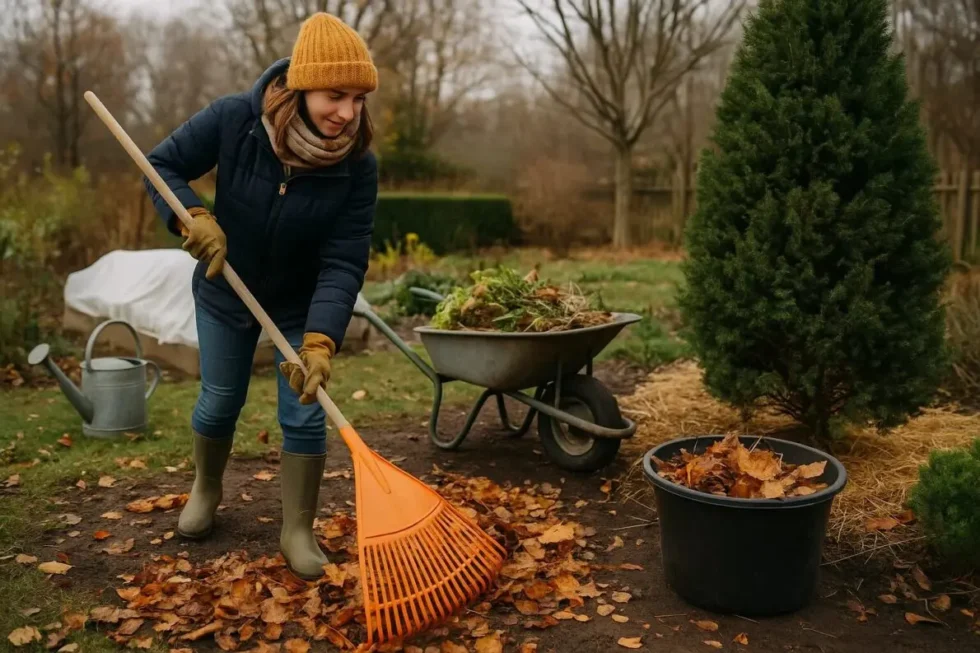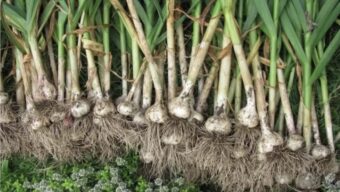How to prepare your garden for winter? Seasonal gardening tips and advice for 2025

BERLIN, October 16, 2025 — As temperatures begin to drop, garden owners across Germany are turning their attention to one essential task: preparing their gardens for winter. According to Noweinformacje.pl, seasonal gardening is not only about aesthetics but also about ensuring a healthy start to the next growing season. Proper autumn care — from planting bulbs and protecting lawns to securing vegetables — can make the difference between a struggling and a thriving garden in spring.
Planting autumn flowers and ornamental plants
Autumn is the perfect time to plant tulips, daffodils, hyacinths, and crocuses — all of which bloom early in spring. Bulbs should be planted at different depths depending on their size (around 10–15 cm for tulips and 7–10 cm for daffodils). The soil should be fertile, well-drained, and slightly moist. Using organic fertilizers such as compost or granulated manure strengthens the soil’s structure.
Perennials like asters and chrysanthemums should be cut back after flowering and protected from frost with bark or leaf mulch. Group planting provides natural protection against wind and dehydration. German nurseries offer high-quality, climate-adapted seedlings, and consistent watering in dry periods helps plants establish strong roots before frost arrives.
Table – Recommended planting depths and tips
| Plant | Planting Depth | Spacing | Blooming Period | Gardening Tip |
|---|---|---|---|---|
| Tulip | 12 cm | 10–15 cm | March–April | Cover with leaves for winter |
| Daffodil | 8 cm | 7–10 cm | February–March | Plant in sunny groups |
| Hyacinth | 10 cm | 7 cm | March | Water regularly during dry weeks |
| Crocus | 7 cm | 5–7 cm | February–March | Protect from birds with netting |
| Autumn Aster | 5 cm | 20–25 cm | September–October | Cut back after flowering and mulch |
Lawn care before winter
Autumn is crucial for strengthening your lawn before frost. Remove fallen leaves regularly to prevent fungal diseases. Aeration — puncturing the soil — improves oxygen and water flow. Apply autumn fertilizer rich in potassium and phosphorus to fortify roots. Cut grass to 4–5 cm height; mowing too short weakens it.
Water during dry weeks, but avoid overwatering. Weed control in autumn reduces competition in spring. Patch reseeding ensures a dense lawn next year. Finally, clean and store garden tools in a dry place to prevent rust.
Checklist – Lawn care actions for autumn
- Remove fallen leaves and debris.
- Aerate the soil to improve airflow.
- Apply potassium-rich autumn fertilizer.
- Mow grass to around 4–5 cm.
- Water moderately in dry periods.
- Remove weeds and moss.
- Reseed bare spots.
- Inspect for pests or diseases.
- Store tools clean and dry.
Protecting vegetables and garden plants from frost
Before the first frost, harvest temperature-sensitive crops like tomatoes, peppers, and eggplants. Store them in a cool, dry room. Cover garden soil with bark, straw, or leaves to protect roots. Root vegetables such as carrots and parsley can remain in the ground under leaf mounds, while cabbages benefit from protective fleece.
Remove dead leaves to prevent fungal diseases. Moderate watering helps plants absorb nutrients before dormancy. Monitoring weather forecasts allows for timely frost protection.
Table – Protecting vegetables in winter
| Vegetable | Protection Method | Material | Notes |
|---|---|---|---|
| Carrot | Leaf mound | Leaves, straw | Remove wilted leaves |
| Parsley | Leaf mound | Leaves, straw | Water before frost |
| Tomato | Harvest early | Cool storage | Avoid rot |
| Cabbage | Cover with fleece | Garden fabric | Shields from deep frost |
| Pepper | Harvest & store | Cool room | Discard damaged fruit |
Using local seeds and seedlings
Local German and Polish seeds are naturally adapted to regional climates, providing stronger resistance and better yields. Choose cold-resistant and disease-tolerant varieties. Nurseries offer bulbs, perennials, shrubs, and decorative trees suited for German soil. Supporting local suppliers ensures sustainability and freshness. Store seeds in a cool, dry environment and label them by planting date. Combining organic fertilizers and regular watering boosts germination rates.
Quick tips for gardeners
- Choose frost- and disease-resistant varieties.
- Buy from local nurseries.
- Use organic fertilizers responsibly.
- Keep seeds dry and labeled.
- Group plants for wind protection.
- Water regularly but avoid oversaturation.
- Support regional horticulture.
Final advice: turning autumn work into spring reward
Preparing your garden in autumn is the most effective way to guarantee a healthy and flourishing spring. Each small action taken now — from mulching and pruning to protecting vegetables and organizing seeds — strengthens the soil, stabilizes roots, and prevents winter damage. Regularly checking soil moisture and adjusting watering according to temperature helps plants survive cold spells and restart growth faster once daylight increases.
Autumn is not the end of the gardening cycle but the foundation of the next one. Investing a few hours in cleaning tools, labeling seeds, and adding compost will reduce future work and improve results. According to Noweinformacje.pl, gardens that receive consistent autumn care show up to 30% stronger blooming in early spring. Taking care of your soil and plants before frost is therefore not just maintenance — it is strategic preparation for growth.
Useful end-of-season actions:
- Apply a 5–7 cm layer of organic mulch to protect roots from frost.
- Clean and store all garden tools in a dry, ventilated place.
- Label seed packets clearly and keep them in a cool, dark environment.
- Lightly prune perennials, removing only dry or diseased parts.
- Secure protective covers and check them after heavy wind or rain.
- Prepare compost with kitchen and garden waste for early spring use.
Finishing these tasks before the first frost ensures that your garden rests safely during the winter months and comes back stronger, greener, and easier to maintain when spring returns.
Stay connected with business news that matters: timely, factual, and global insights shaping Germany and the world: What are the 10 proven tips to remove bad smells at hom
